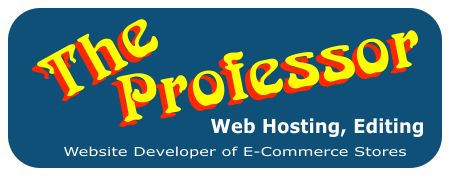
The Role of Providers in Responsive Design:
A Closer Look at Dashboard Functionality and SEO FormattingIn the realm of web development, responsive design has become a critical aspect of creating user-friendly and accessible websites. For service providers, particularly those offering web hosting, content management, and e-commerce platforms, the design and functionality of their dashboards are paramount. However, a common oversight is the lack of built-in SEO formatting, leaving users to navigate this crucial task on their own. In this article, we will explore what a responsive dashboard achieves and the implications of leaving SEO formatting to the users.
What is a Responsive Dashboard?
A responsive dashboard is an interface designed to adapt seamlessly to various devices and screen sizes. This design approach ensures that whether a user accesses the dashboard on a desktop, tablet, or smartphone, they have an optimal viewing and interaction experience. Key elements of a responsive dashboard include:
- Fluid Grid Layouts: These layouts adjust the placement and size of elements based on the screen size.
- Flexible Images and Media: Media content resizes automatically to fit different screen dimensions without loss of quality.
- Adaptive Navigation: Menus and navigation elements change format (e.g., from a horizontal menu to a hamburger menu) to remain accessible and functional on smaller screens.
Achievements of a Responsive Dashboard
A well-designed responsive dashboard provides numerous benefits:
- Enhanced User Experience (UX): Users can efficiently access and manage their accounts or services regardless of the device they use. This adaptability leads to higher satisfaction and productivity.
- Increased Accessibility: A responsive design ensures that all users, including those with disabilities, can navigate the dashboard effectively.
- Future-Proofing: As new devices and screen sizes emerge, a responsive design minimizes the need for extensive redesigns, offering long-term compatibility.
- Improved Engagement: Users are more likely to engage with a platform that is easy to use and visually appealing across all devices.
The SEO Challenge: User Responsibility
While responsive design addresses many usability concerns, a significant gap remains: SEO formatting. Many providers do not format pages for SEO, leaving users with the responsibility to optimize their content. This includes:
- Meta Tags: Users must manually add meta descriptions, keywords, and title tags to improve search engine visibility.
- Alt Text for Images: Properly described images are crucial for both accessibility and SEO, and users must ensure all images have relevant alt text.
- URL Structure: Clean and descriptive URLs are essential for SEO, and users need to configure these settings themselves.
- Content Formatting: Proper use of headings (H1, H2, H3) and ensuring content is well-structured and readable are tasks left to the user.
Implications of User-Managed SEO
The lack of built-in SEO formatting tools means that users must have a certain level of expertise or seek additional resources to optimize their websites. This can lead to:
- Inconsistent SEO Quality: Users with varying levels of SEO knowledge may produce inconsistent results, affecting their site's search engine performance.
- Increased Workload: Users must dedicate extra time and effort to learn and implement SEO best practices, which can be a significant burden for those without prior experience.
- Potential for Errors: Without automated tools, the risk of overlooking critical SEO elements increases, potentially harming the website's search engine ranking.
Conclusion
Responsive dashboards represent a significant advancement in user experience, ensuring accessibility and functionality across all devices. However, the absence of integrated SEO formatting tools places an additional burden on users. As providers continue to innovate, incorporating SEO best practices into their dashboards could bridge this gap, offering a more comprehensive and user-friendly solution. Until then, users must remain vigilant and proactive in their SEO efforts to ensure their content achieves the visibility it deserves.
By understanding the dual role of providers in delivering both responsive design and facilitating SEO, users can better navigate the complexities of modern web development and maintain a competitive edge in the digital landscape.

Leave a Comment